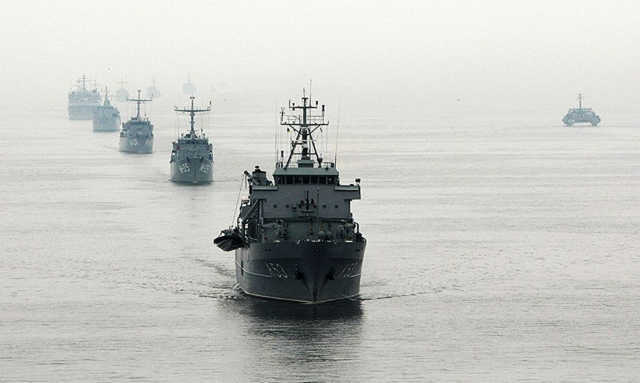The naval forces of the Baltic States (Estonia, Latvia and Lithuania) have two main tasks – to protect national waters and to support their NATO allies. Although their naval capabilities are limited and based on second-hand vessels, all three fleets meet NATO standards and form the first line of defense on NATO's eastern flank.

Dr. Robert Chulda
Author: Dr. Robert Czulda is an associate Professor at the Faculty of Foreign Policy and Security of the University of Lodz (Poland), graduated from the Faculty of National Security of the National Defense University (2007).
All three States share the same perception of the threat and consider the Russian Federation as the only challenge to their security and independence. The risk posed by the Kremlin became more inevitable already in 2014, when Putin began his aggression against Ukraine. One element of Moscow's more aggressive approach was to increase the forces allocated to its Baltic Fleet and use them to exert pressure on Central and Eastern Europe. In April 2018, Russia conducted naval exercises with live firing of surface-to-surface and surface-to-air missiles, which involved three corvettes, one frigate and helicopters in three separate areas of the southern and southeastern Baltic Sea (between Sweden, Poland and Lithuania). The then Prime Minister of Latvia, Maris KUCINSKIS, regarded these exercises as "a demonstration of force that it is difficult to imagine that it can take place so close to our country."
Russia's direct aggression against Ukraine in February 2022 only increased fears in Vilnius, Riga and Tallinn. The Baltic states immediately decided to increase their military spending. Most likely, it will benefit their fleets. Although, on the one hand, they are not a priority force for the Baltic States, on the other hand, they are considered as an important element in security agreements with other NATO member states. In particular, in the event of any hostilities, the Baltic Navy will be tasked with facilitating NATO's strengthening actions in the Baltic.
Maritime capabilities of the Baltic States Navy
As for the capabilities of the Baltic Naval Forces, their main focus is on ensuring the security of territorial waters and exclusive economic zones. They clearly lack offensive capabilities — they will be provided by NATO allies. The primary task is to maintain reliable mine action units. In addition to Search And Rescue (SAR) operations, the most important peacetime task is the detection and destruction of mines and other unexploded ordnance left over from the two World Wars.
According to NATO, during the First and Second World Wars, 160 thousand mines were installed in the Baltic Sea, of which barely 20% have been removed or destroyed during neutralization operations to date. Another important role is to provide protection when visiting Alliance warships, both in the naval scenarios of "blue water" [on the high seas] and "green water" [coastal waters]. Both of these roles will affect procurement schemes, as well as determining the future structure of the fleet forces. All three Baltic States actively participate in the First Standing NATO Mine Countermeasures Group One (SNMCMG1).
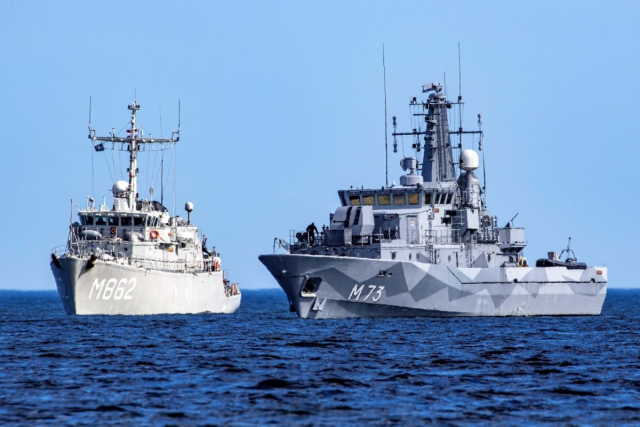
SNMCMG1 ships in the Baltic Sea
The main platform for cooperation between the Baltic States is the Baltic States Naval Squadron, which was established in 1998 to provide "permanent rapid response capabilities at sea in peacetime and crisis." Its goal is also to increase interoperability and provide the Baltic States with naval forces capable of participating in NATO-led peacekeeping operations.
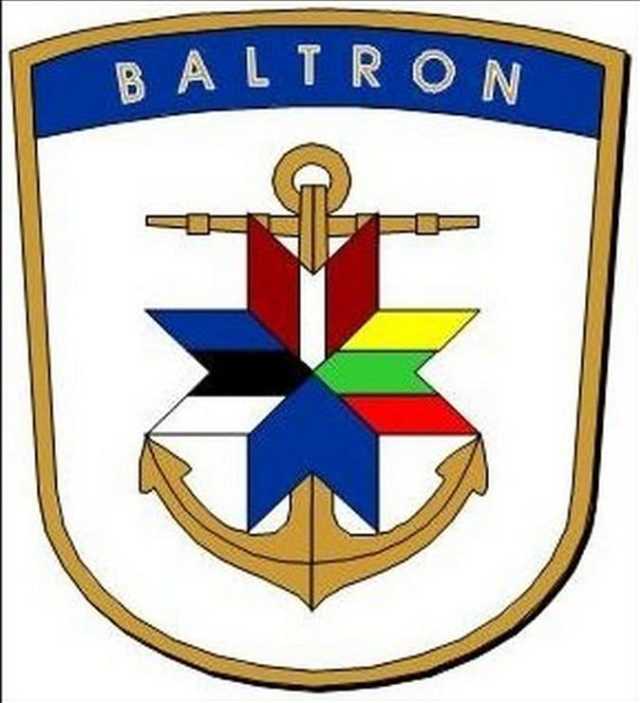
BALTRON logo
As explained in the Ministry of Defense of Latvia, "the ships of the national fleets of the Baltic states are transferred to the BALTRON for a period of 6 to 12 months by a mine squadron consisting of two mine countermeasures vessels (MCMVs) and one control and supply ship. BALTRON organizes mine clearance and military exercises that increase the safety of navigation in the Baltic Sea. The squad is also involved in search and rescue operations." If in 2021 BALTRON was headed by the commander of the Latvian Navy, then in January 2022 Lithuania assumed this responsibility
Baltic Navy modernization plans
Estonia
Estonian Navy. Emblem
Estonia has both the longest coastline (1,241 km or 3,800 km including islands) and the most ambitious plans for fleet renewal among all three Baltic countries. The main focus of the Estonian Navy (Merevägi, or "Merevägi") in the coming years will be on maintaining and further developing the capabilities of the current fleet, mainly its mine search capabilities.
In 2006, Estonia purchased three lightly armed SANDOWN-type minesweepers (M313 ADMIRAL COWAN, M314 SAKALA and M315 UGANDI), all of which are still in service. These ships, built and previously used in the United Kingdom, form the basis of the Merevyaga and serve as Tallinn's contribution to NATO.
In February 2019, the first ship, ADMIRAL COWAN, which is the flagship of the Merevyagi, was upgraded using Thales Sonar 2193, installed in the hull of a broadband sonar station (GAS) to search for mines. It replaced the previous Sonar 2093 variable depth sonar.
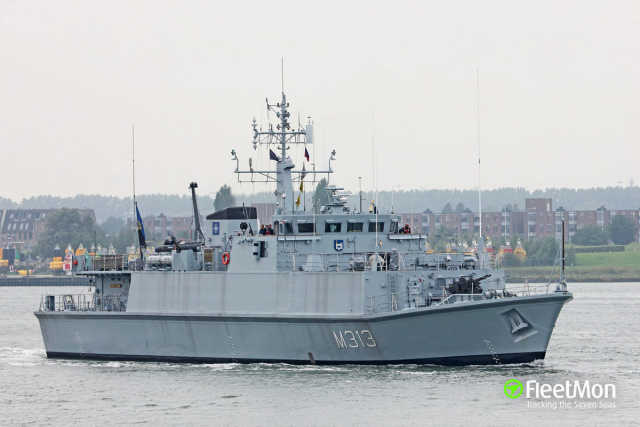
The flagship of the Estonian Navy ADMIRAL COWAN
The ship also received an upgraded navigation system and the Thales M-CUBE combat control system (replacing the NAUTIS 3 from BAE Systems). The modernization was carried out by Babcock and Thales, which have already completed work on two other ships. The Estonian Navy believes that its "future mine action capabilities (MCM) need further modernization in the period 2030+," however, "a decision on the capabilities of the next-generation MCM has not yet been made."
Another reinforcement was undertaken in 2016, when Merevyagi commissioned the WAMBOLA control and support ship of the LINDORMEN project, acquired in Denmark in the previous decade, instead of its sister ship TASUJA. Subsequently, in December 2020, Merevyagi received two high-speed (over 30 knots) boats for the Saaremaa Island Defense Forces, named RISTO and ROLAND. The boats were built in eight months by Baltic Workboats AS (BWB). Their total cost was 3.9 million euros. Although we are talking about small (18 meters) vessels, purchases are significant for two reasons.
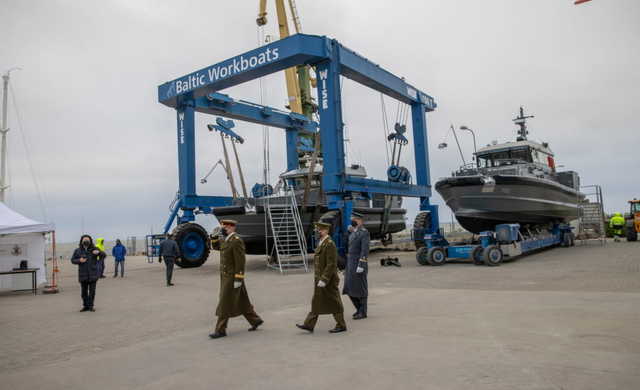
The ceremony of handing over the RISTO and ROLAND boats to the Estonian Navy
Firstly, since the restoration of independence in 1991, these are the first products built on the spot. Secondly, the boats will fill a significant gap: their task is to ensure the protection of Allied warships visiting Estonia both at sea and in port. Previously used vessels were too large to operate in restricted and shallow-water port areas.
Saaremaa boats are also planned to be used for coastal patrol and training of Navy personnel. The boats are armed with two 12.7 mm heavy machine guns. In 2021, FN SEA DEFNDER, a remotely controlled 12.7 mm combat module manufactured by FN Herstal, was installed on the boats.
To be continued…
The materials of the article contain exclusively the author's estimates and do not reflect the position of the editorial board of IVi.
Based on the materials of the Maritime Defense Monitor magazine
